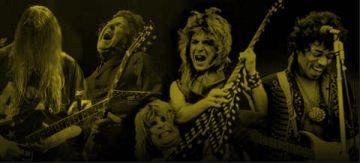antosimoni wrote:SteveD wrote:OK guys here is the lowdown; -
V1 is the first gain stage included in the signal path on both dynamic ranges.
V2 is an extra gain stage which is included only on the high dynamic range.
V3 is the tone stack
V4 is the phase inverter.
If anybody requires any clarification of what the various pots and switches do on the Vintage Modern I would be happy to explain in detail; just give me a shout.
Steve
hi Steve,
thanks for your attention, please take a time to answer these simple questions :
so the Fx Loop and the Reverb are not tube-driven ?
why the Detail control is much more gainier than the Body one?
the mid-boost is not tube-driven, right?
and.... could you please suggest me the best settings to nail JTM (or Plexi) tones? I'm having a hard time with that...
The FX loop utilises high voltage mosfets which behave in a similar way to valves. The FX loop stages are only conditioning buffers and I wasn't after any distortion from these stages so it works very well IMO. What do you think?
I didn't see the point in driving a digital reverb with a valve.
The Detail and Body controls both have the same gain. The 'Detail' controls gain from 400Hz upward and the Body controls gain from 400Hz downward. Virtually all of a guitar's harmonic distortion can be found in the Detail control's area so it is this control which has the most dramatic affect. The Body control affects the fundamental frequencies. There is a natural classic Marshall mid dip at 400Hz (the crossover frequency) which can be boosted and flattened out with the mid boost button if you like. The mid boost is a passive circuit in the signal path, not an extra stage.
The Vintage Modern is basically a JTM45 with some hot rodding. For a JTM 45 tone select the low dynamic range, master volume on full, mid boost out, Detail at 2 -4 o'clock. Body at 1 - 3 o'clock and then dime the tones. This should be very close.
The vintage Modern is essentially a Plexi with some bells and whistles. Its foundation is the 'JTM 45 Super 100's' as championed by Hendrix, Clapton in Cream and several others.




